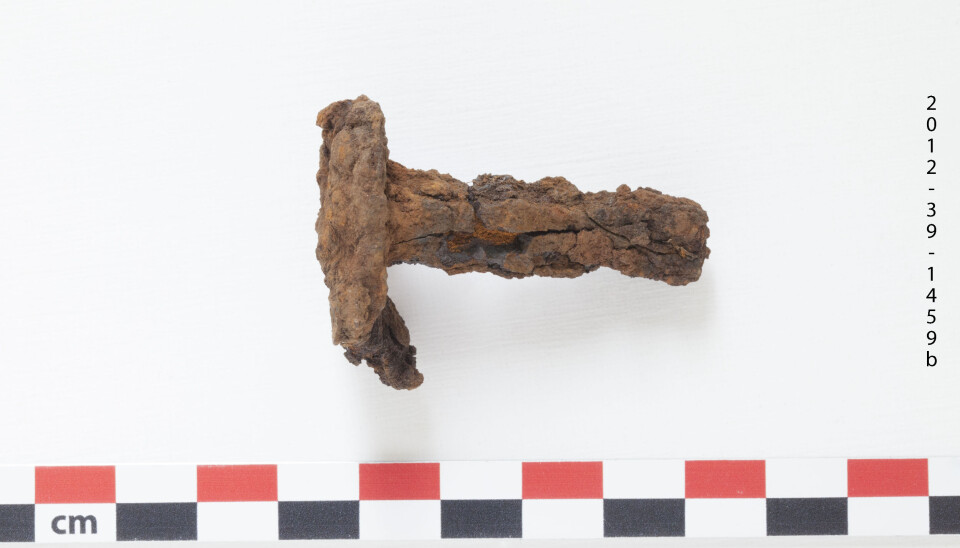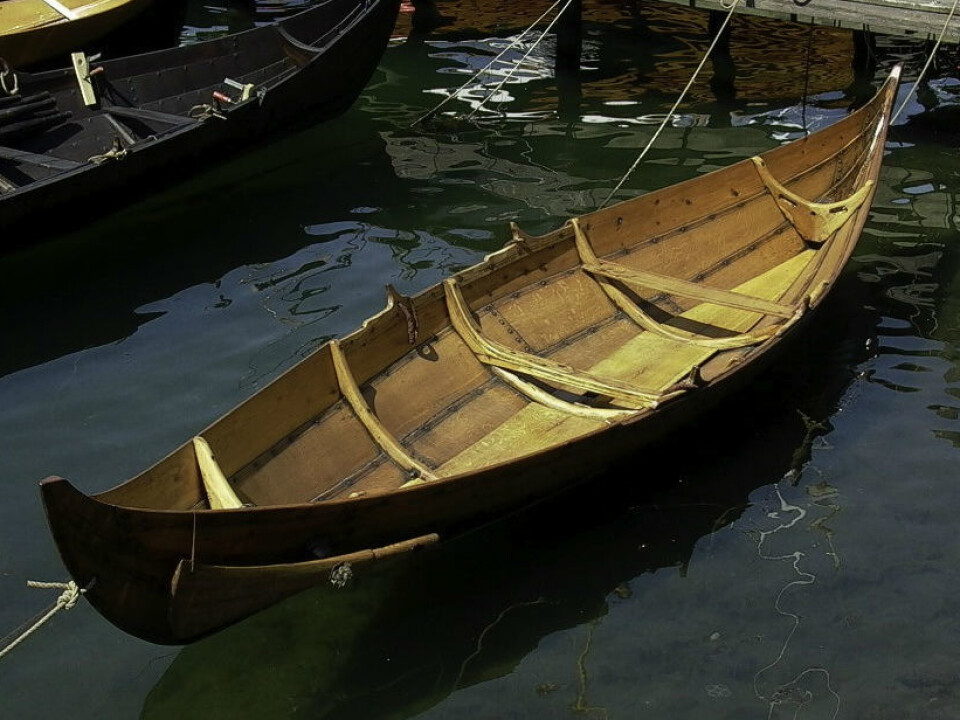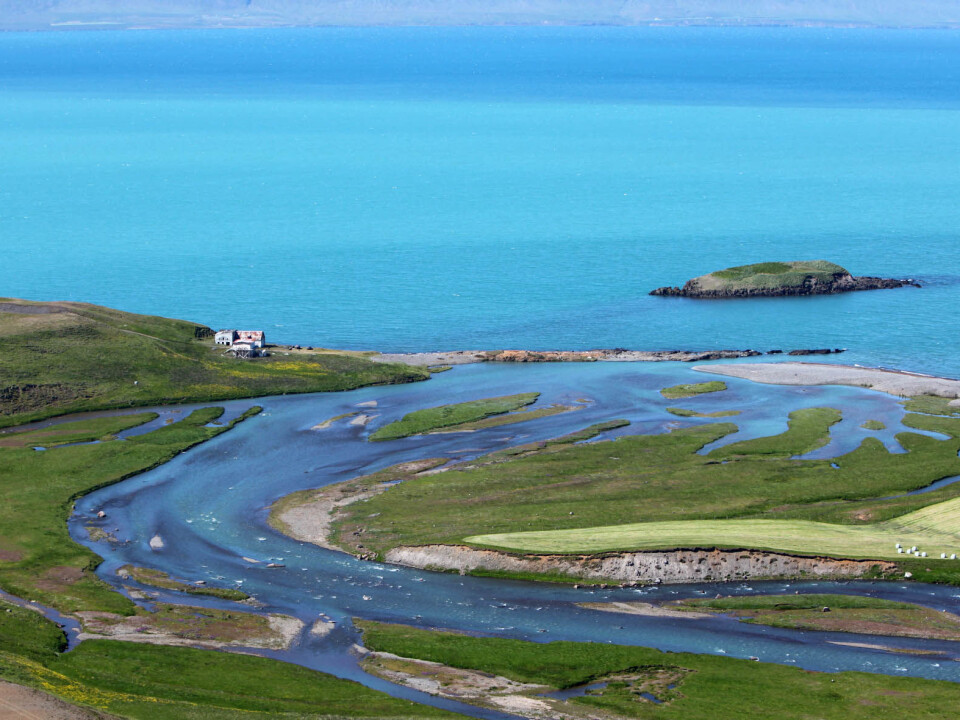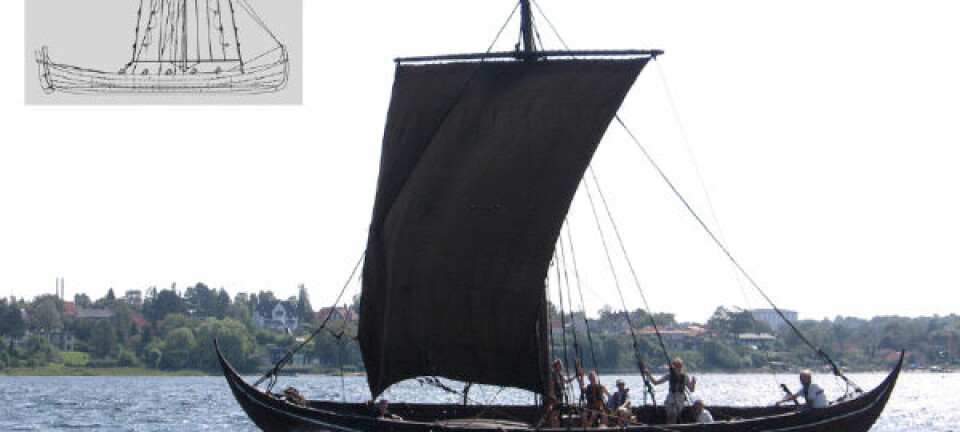An article from NIKU - Norwegian Institute for Cultural Heritage Research

Rusty rivets reveal origin of Icelandic viking ships
Viking ships found in Iceland have decayed and often the only things remaining are the rivets. A group of scientists now believe we can learn a lot from the surviving pieces of iron and have brought them to Norway for examination.
A research project involving the Norwegian Institute for Cultural Heritage Research (NIKU) and Antikva ehf. from Iceland, along with others, will investigate where the rivets and the boats originally came from.
The questions around boats and ships in Iceland are many. What type of Viking ships sailed between Norway and Iceland? Were they Norwegian or were they built locally? Did some of them perhaps come from other Nordic countries?
"The driving forces behind the Viking era have been discussed many times over. The one thing we are certain of is that the Viking ship was the key player," says archaeologist Dr Knut Paasche, researcher and head of the Norwegian part of the project.
Expansive Vikings
During the Viking Age and the Middle Ages, hundreds of boats and Viking ships sailed along and out of the Nordic coasts every single year. From the coast of Norway, many travelled out in to the Norwegian Sea, across the North Atlantic and out to the British Isles, the Faroe Islands, Shetland and Iceland.

The Landnámabók and the Icelandic sagas contain many written testimonies about journeys between Norway and Iceland.
"There have been several archaeological studies that have shown boat discoveries from the Viking era in Iceland. So far we have around 10 burial mounds with remains of boats preserved. Many are smaller boats, but some may be labelled Viking ships”, says Dr Paasche.
Such finds give better insight into the journeys between Norway and Iceland and the boat types that were in use in Viking and Medieval times.
Four-hundred boat nails
The largest discovery is of more than four-hundred boat nails from the harbour Kolkuós in Skagafjörður, Northern Iceland, found as part of the archaeological excavations led by Ragnheiður Traustadóttir between 2002 and 2012.

Kolkuós was one of Iceland's most important harbours and the excavation carried out has already revealed extensive trade relations between Iceland and Norway.
The port was used from when the Vikings came to Iceland in 874 until centuries later when it became the harbour for the bishopric of Hólar.
X-ray examination of boat nails
So far, more than a hundred boat and ship nails have been transported to Norway for X-ray at NIKU.
"Many of the clinker nails are rusty and in bad condition. The x-rays give us an opportunity to study the nails in detail; so far we can say that the size and type shows great variation, and the nails therefore represent everything from small faeringer to larger ships," says Dr Paasche.
Based on typological criteria, researchers can say that the nails date from the Viking Age to the Middle Ages.
"There is no doubt that the project will illustrate an important part of Norse history as well as a common Norwegian and Icelandic history. Studies of clinker nails and boat discoveries in Iceland, along with wonderful written testimonies, can highlight the Norwegian boat tradition and more general questions about the Viking era's boat and ships in the North Atlantic," says Paasche.
Where were the Viking ships built?
The researchers have many questions and are looking for answers. What kind of ships sailed between Norway and Iceland? Were they Norwegian or were they built locally or do they originate from elsewhere?
"If they were built in Norway, we can say in a way that they finally came back and returned full circle," says Dr. Paasche.
The researchers are certain that the finds represent Nordic-built Nordic-style boats. Now they want to find out more the surviving pieces.
Samples of the iron in the clinker nails will also be taken and analysed to see if the provenance can be determined, and to hopefully find where the iron came from.
There are also small traces of wood on some of the sounds. These will also be analysed looking for evidence for tree types like Norwegian pine.
Further studies of boat finds and boat graves from Iceland can help answer some of the questions researchers have about the ships sailing between Iceland and the other Nordic countries in the Viking and early Middle ages.
































